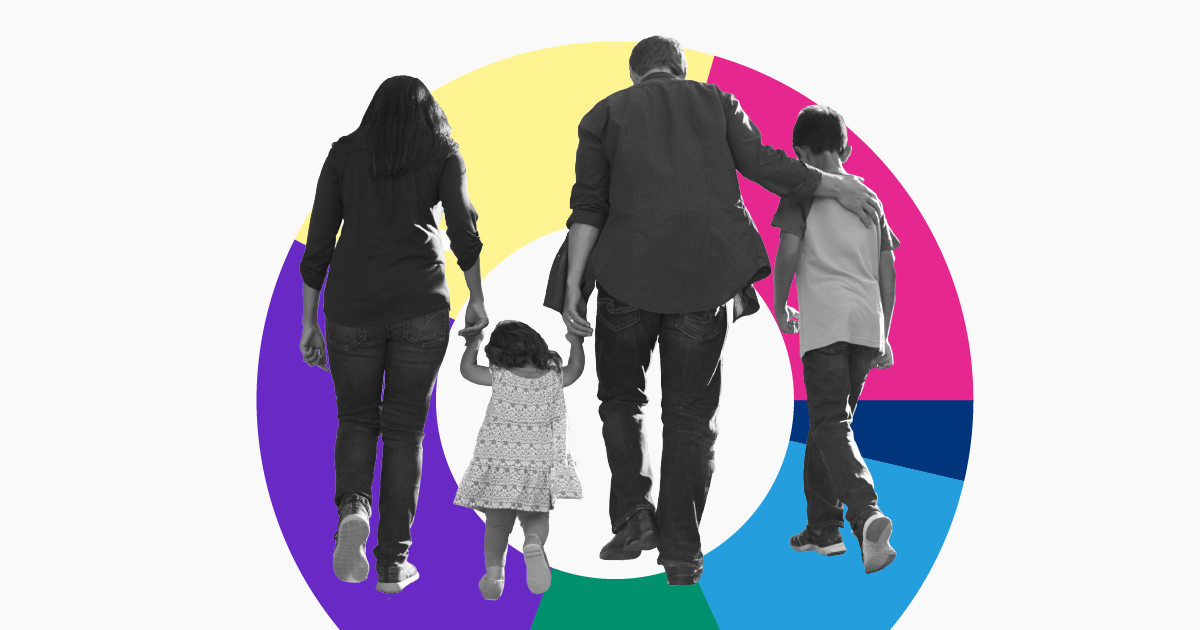Population
How do men and women use time differently?

The US population grows each year as more people are born and immigrants move into the country. But not all areas of the country experience the same levels of growth. In fact, one state – West Virginia – lost population between 2000 and 2021.
Different rates of migration into a state from within the country and different birth rates historically account for the largest differences in population growth between states. However, death rates became the second-largest driver of population growth differences between 2020 and 2021, due in part to the impacts of the COVID-19 pandemic.
Nevada had the highest growth rate between 2000 and 2021, with its population increasing by 56%. Utah and Idaho were the only other states with growth rates higher than 45%.
Meanwhile, West Virginia’s population shrank by a little more than 1%, and Michigan and Illinois both had growth rates of less than 3% over the same time period.
The Census Bureau collects data on the four ways that a state’s population can change: births, deaths, domestic migration, and international migration.
Births and deaths together make up the natural change in a state’s population. Natural population change can be negative if more people died than were born in a given year.
Domestic migration refers to people moving between states within the country, while international migration refers to people in a state moving to or from another country. Both domestic and international migration can be negative if more people moved away from a state than moved to it in a given year. Domestic and international migration together make up net migration.
According to Census data, births were the primary driver of population growth in the United States, with about 84 million babies being born between 2000 and 2021. Net migration, which at the national level only includes international migration, was about 18 million during that time.
Domestic migration and births were the most important factors driving differences in population growth between states from 2000 to 2021. The Midwest and Northeast regions[1] had lower domestic migration and births than the South and West.
Domestic migration is the factor that varies the most between states. Domestic migration helped drive population growth in 25 states, while it had a negative impact on population in the other 25 states and Washington, DC. As a proportion of each state’s population in 2000, net domestic migration ranged from -19% in New York to 32% in Nevada.
According to data from the Census Bureau, about 45% of moves are housing related, such as buying a home, moving to a new rental, or moving to a better neighborhood. About 25% of moves are family related, such as young adults getting their own place, or couples getting married or divorced.
Nevada, which had the highest population growth rate between 2000 and 2021, also had the highest rate of domestic migration, and Idaho came in third for both measures. Meanwhile, Illinois, which had the third-lowest population growth rate, had the second-lowest domestic migration rate.
The Northeast had the lowest domestic migration rate among the four Census regions, with a net domestic migration decrease of 6%. The Midwest also had negative domestic migration. The West and South had positive domestic migration of 1% and 4%, respectively.
The next most important factor was births. Births as a proportion of the 2000 population ranged from 21% in Vermont to 48% in Utah, the state with the second-highest population growth rate. Births were third-highest in Nevada, contributing together with domestic migration to its high population growth. West Virginia, the only state with a population loss between 2000 and 2021, was in the bottom five states by birth rate.
The Northeast also had the lowest birth rate as a proportion of its 2000 population, at 13%. The Midwest’s birth rate was 14%, while the South and West each had birth rates equivalent to 16% of their 2000 populations.
In the short term, deaths became a greater driver of variation between states than births. Between 2020 and 2021, 1.5% of West Virginia’s population died, and Alabama, Maine, and Mississippi each had 1.3% of their population die. That’s about 0.3 percentage points higher than the annual average of population loss due to deaths in each of those states from 2000 to 2019. The number of deaths in all these states surpassed the number of births, leading to negative natural population change. In both 2020 and 2021, COVID-19 was the third leading cause of death nationwide, after heart disease and cancer.
The share of the 2020 population that died between 2020 and 2021 varied from 0.7% in Utah, which had the second-highest overall population growth rate, to 1.5% in West Virginia.
To further explore changing population and demographics at a national, state, and local level, check out Our Changing Population and get the facts every week by signing up for our newsletter.
According to regions defined by the Census Bureau.
Newsletter
Keep up with the latest data and most popular content.